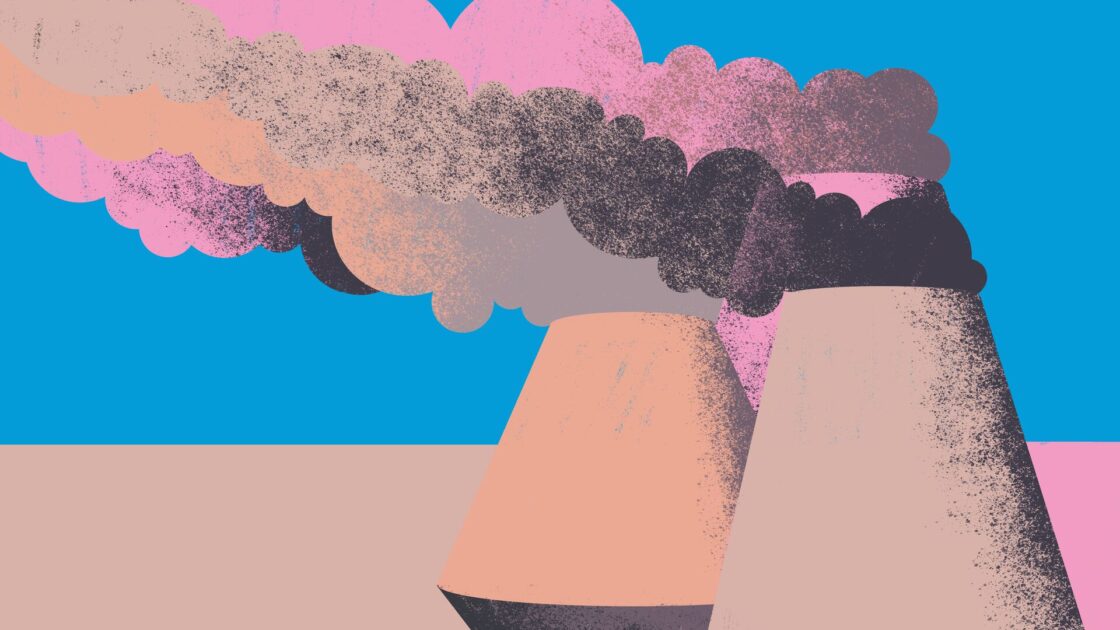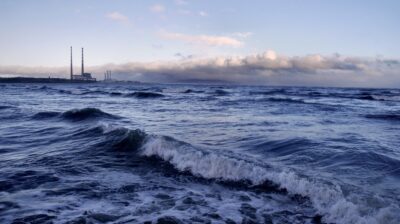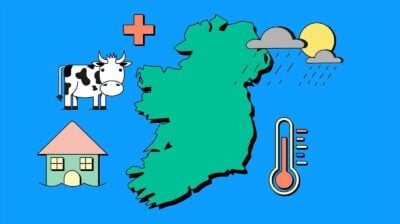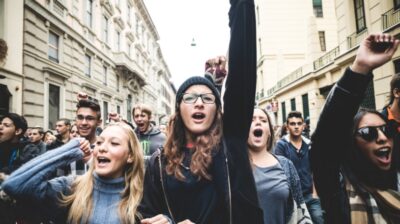What is climate change?
Climate change, also known as the climate crisis, is one of the biggest issues facing young people today

Across the world, more and more people are beginning to recognise climate change and global warming are two of the biggest threats facing humanity today. Our use of fossil fuels (such as coal, oil, and gas) over the last century has caused the earth to warm up, and this has devastating effects for the planet.
The Intergovernmental Panel on Climate Change (IPCC) AR6 report stated that it is “unequivocal that human influence has warmed the atmosphere, ocean and land” and that we are already seeing the effects of global warming through extreme weather and climate events like heatwaves, flooding, droughts, and more.
People are starting to talk about climate change more often and ask what the solutions are. In order to join in this conversation, it helps to understand what climate change and global warming are and why this is happening.
In this article:
- What is global warming?
- What is the difference between weather and climate?
- What causes climate change?
- The three main causes of climate change
What is global warming?
One of the more well known aspects of climate change is global warming. Global warming refers to the rise in the Earth’s average temperature. Over the last 100 years, the average temperature on Earth has warmed by 1° Celsius, while the Arctic is warming more than twice as fast, according to the World Wildlife Foundation (WWF)
This may not seem like a lot when you think about it in terms of our day-to-day experience with changing temperatures, but for the planet it has had a significant impact. A change of a degree can see fertile land change to desert, coral reefs go from healthy to dying, and thriving wildlife become extinct.
Most people already know some of the effects of global warming, such as the melting of the ice caps and a rise in sea levels, but there are many more consequences that not only threaten wildlife and the environment, but have an impact on our quality of life too by reducing air quality, increasing the amount of extreme weather events that damage our homes and communities, and threatening our futures.
If the world is heating up, why do the winters seem colder?
Some people argue that the Earth can’t be heating up when we are experiencing extreme cold spells in some parts of the world. However, although it may be incredibly cold in a certain area, the average temperature across the world is warmer.
In order to understand why extremely cold weather events are the result of climate change, we need to look at the difference between weather and climate.
What is the difference between weather and climate?
Although it may seem like the same thing, there is an important difference between weather and climate.
Weather
Weather refers to the day-to-day change in temperature and conditions in a certain area. For example, one day it could be raining, the next day it could be sunny. The weather in one area could be different to another area. In Cork, for example, the sun could be shining, but in Donegal it could be raining on the same day. Weather changes from one day to the next.
Climate
Climate refers to what weather is normal in a certain area in each season. For example, in Ireland the climate is mild and it rains a lot. We generally don’t experience extremely high temperatures in the summer or extremely low temperatures in the winter. The climate can be different for each season, but there is an understanding as to what is normal weather for Ireland.
What is climate change?
When an area starts to experience weather patterns that are not normal for the time of year, this is most often because of climate change. Things like heat waves during summer or snow in March are unusual weather events for Ireland, but they are happening because the climate is changing rapidly and beginning to break down.
But climate change is about more than just hotter summers, it can also result in more extreme and unpredictable weather events, like storms or hurricanes, that can threaten our towns, cities, homes, and lives. Events like major floods or forest fires that we’re seeing in countries across the word are examples of extreme weather that can destroy homes and communities, and we’re starting to see more of these events in Ireland too.
What causes climate change?
While a certain amount of climate change can occur naturally as the earth moves further or closer to the sun, the level of climate change we are seeing today is the result of the human activity of burning of fossil fuels. Our day-to-day activities, such as driving, cooking, and heating our homes all use up energy that relies on fossil fuels to run. Other activities like intensive farming and cutting down forests also contribute to climate change.
These activities release greenhouse gases into the atmosphere, causing the planet to heat up.
Greenhouse gases
Greenhouse gases are gases that trap heat. When sunlight passes through the atmosphere, the greenhouse gases absorb the radiation and prevent the heat from leaving the atmosphere. Greenhouse gases are important because without them, the Earth would be too cold for us to survive.
However, too much greenhouse gas causes the Earth to heat up as they cause more and more heat to become trapped in the atmosphere. The hotter the planet gets, the less likely it is that we will be able to survive. Global warming as a result of greenhouse gases in the atmosphere is known as the ‘greenhouse gas effect’, because heat is coming in and getting trapped inside, like a greenhouse.
Greenhouse gases include:
- H2O (water in gas form)
- Carbon Dioxide (CO2)
- Methane (CH4)
- Nitrous oxide (N2O)
All of these gases are released through human activity, such as burning fossil fuels, farming, and deforestation.
Is there such thing as a safe amount of greenhouse gas?
There are safe levels of greenhouse gases, but if they go above this level, it becomes unsafe. For example, the max safe level of CO2 is 350 parts per million. We are now over 400 parts per million, after going over safe levels in 1985. CO2 stays in the air for hundreds of thousands of years, so new generations are burdened with a huge climate problem they did not cause.
You can view the level of CO2 today at co2.earth and find out what people want to do about it at 400.350.org.
The three main causes of climate change
There are three main activities that are resulting in the most greenhouse gases being released into the atmosphere:
- Burning fossil fuels
- Intensive farming and agriculture
- Deforestation
Burning fossil fuels
Fossil fuels are things like coal, oil, and natural gas. These fossil fuels are basically composed of carbon (C), so when we burn them, the carbon mixes with two oxygen atoms (O2) to create CO2. Fossil fuels took millions of years to form, and, unlike energy sources such as wind or solar power, they are a non-renewable source of energy.
We have come to rely heavily on fossil fuels to power things like factories, cars, running machinery, using electricity, flying planes, and creating the things we use in our everyday lives, like our phones, computers, and plastic. However, it’s important to remember that there are alternative energy sources, like wind and solar – we don’t have to choose between having climate change or being without energy.
The more fossil fuel we burn, the more greenhouse gases will be released into the atmosphere. As a result, the earth will continue to heat up.
Intensive farming and agriculture
The way we produce our food can have a big impact on the environment. Intensive agriculture is one of the biggest emitters of greenhouse gases and everything from keeping and feeding livestock, watering and maintaining crops, and packaging and transporting meat and produce releases greenhouse gases.
For example, when cows digest food they release the greenhouse gas methane, a very strong greenhouse gas. When you consider that for our diary and meat intake 1.5 billion cows are currently being bred – who all spend their days eating and digesting – you can imagine this results in very high levels of methane being released each year.
Not only this, but billions of gallons of water are used in agriculture every year, and an increase in the use of machinery for farming also leads to the release huge amounts of CO2 emissions.
Deforestation
Deforestation is when trees and forests are removed to make room so that the land can be used for something else. This is often to make space for more livestock, roads, or urban development, but it can also be for resources like wood or palm oil.
Trees and forests are an important part of preventing climate change because they act as ‘climate sinks’, absorbing carbon dioxide (CO2) and removing it from the atmosphere. When trees and forests are cut down, the CO2 they have absorbed is released back into the atmosphere.
Aside from climate change effects, deforestation also threatens wildlife and biodiversity, as well as impacting on the livelihoods of people who live in the areas where deforestation is taking place.
What can we do about climate change?
When it comes to taking action on climate change, we need to act now. This means that we each should take steps to reduce our carbon footprint, but it also means pressuring our governments and corporations to take the necessary steps to reduce emissions, as outlined in the UN Paris Agreement.






